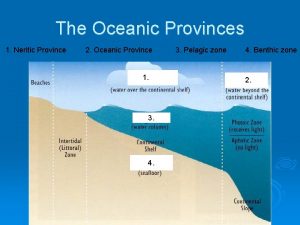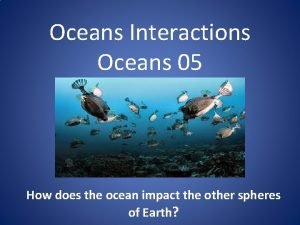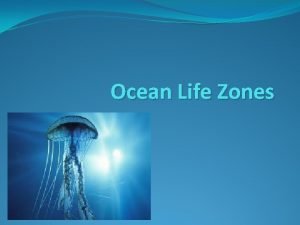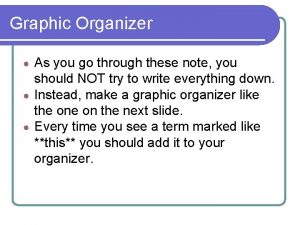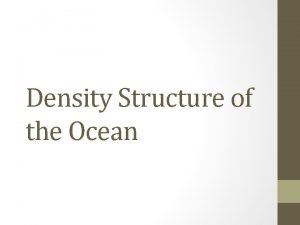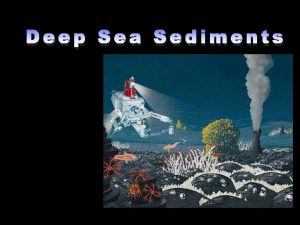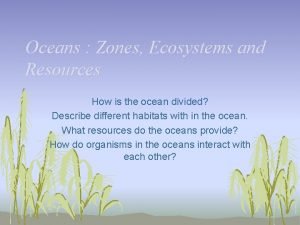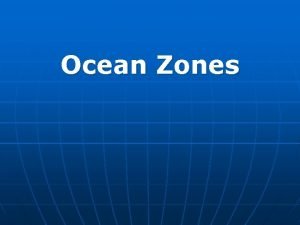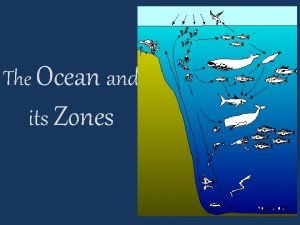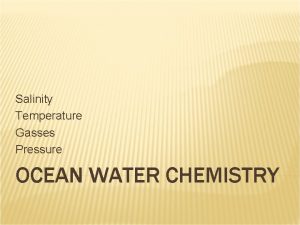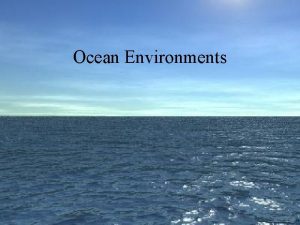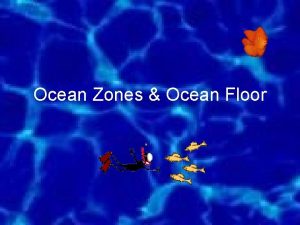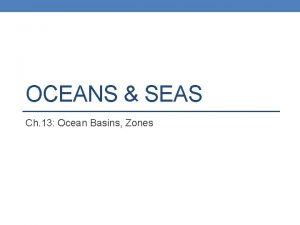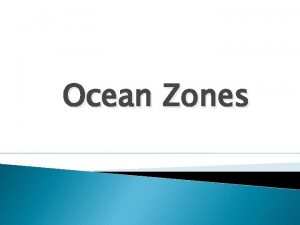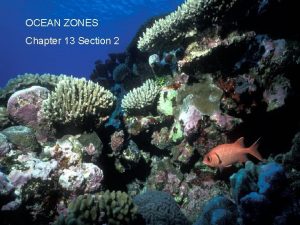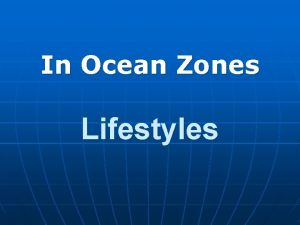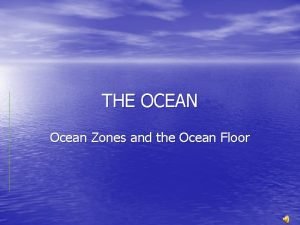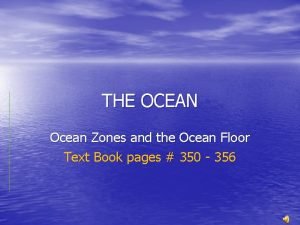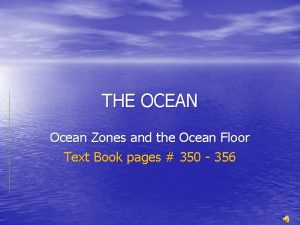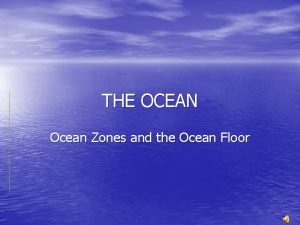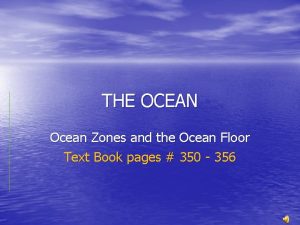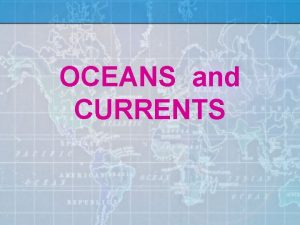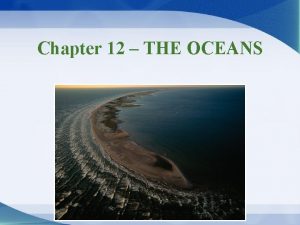The Ocean and its Zones Oceans There are















- Slides: 15

The Ocean and its Zones

Oceans • There are 5 • Pacific is the biggest • We get many resources from them: –Food –Minerals –Fuel (oil) –Freshwater (through evaporation)

• contain water and salts The main salt is Sodium Chloride

Salinity is a measurement of the total amount of dissolve salts in water. The ocean is 35 parts per thousand or 3. 5% salt.

• The ocean is divided into zones horizontally (like layers of a cake) and vertically.

These are the horizontal zones


Surface 0 - 600 ft Transition 600 – 2600 ft Deep 2600 ft- sea floor As you go from the surface to the transition and into the deep zone: Light decreases Temperature decreases Pressure increases Oxygen and nutrients levels fluctuate but are lowest in the transition zone

Surface, Sunlit, Photic Zone • On top (0 to 200 m or 0 – 600 ft. ) • Gets sunlight • Warmest layer but temps. drop quickly • Plenty of food and plankton growth • Lots of oxygen and gases

• Color and light fades quickly in the order of the rainbow. By 60 ft. there are only blacks, browns, grays, and whites. The deeper you dive the more water is over the top of you. • Pressure is increasing • Contains familiar plants and animals. • Once you get down to about a depth of 100 feet you will feel the pressure against every square inch of your body. It really becomes noticeable as you breathe. At a depth of 100 feet, the size and volume of your lungs has been reduced to 1/3 rd their capacity at sea level. You will also notice that it is much darker at 100 feet and COLD. The lack of sunlight at that depth also means the ocean is not getting warmed by sunlight, either. At a depth of about 180 feet you’ve pretty much reached the limit of safe diving for a human breathing compressed air.

Transition, Thermocline, or Twilight Zone • • 200 m- 1 km down Rapid temperature drop to 4 OC less food and plankton b/c less light Little oxygen more pressure (over 100 atms at the bottom) lowest in nutrients Few things live here

Deep, Midnight, bathypelagic Zone • 1 km to ocean floor • Deepest • Darkest (absolutely no light not even, a realm of perpetual darkness, where even the faintest blue tendrils of sunlight cannot penetrate) • tremendous pressure • near freezing temperatures • Little food (most falls from the surface zone) • Most dense water

Life that in the midnight zone is very difficult. It relies indirectly on the benefits of sunlight; organisms thriving in the sunny upper layers of the sea die their eventual deaths and rain down upon the sea floor a steady flow of organic nutrients to feed the masses living at or near the bottom. The organic “rainfall” includes dead microscopic organisms, such as phytoplankton and dinoflagellates, sinking downward, fecal pellets of fish and mammals, and carcasses of larger organisms sinking down to the sea bed. Those creatures that do not feed directly on the “leftovers” raining down from above, usually prey upon those that do. Many of the creatures thriving in the deep sea have taken on fascinating, gruesome and horrifying visages and proportions, developing special adaptations to surviving in this harsh environment

Vertical zones include the open ocean, the neritic, & intertidal zones

The ocean and its zones are constantly in motion and are impacted by: • plate tectonics, • weather, • climate, • river systems, and • human activities.
 Insidan region jh
Insidan region jh Crash course kids weather and climate
Crash course kids weather and climate How do littoral zones differ from riparian zones?
How do littoral zones differ from riparian zones? Oceanic province
Oceanic province Ocean and lake zones
Ocean and lake zones Hachetfish
Hachetfish Ocean zones graphic organizer
Ocean zones graphic organizer Make an ocean life zones foldable
Make an ocean life zones foldable Ocean zones graphic organizer
Ocean zones graphic organizer Ocean density zones
Ocean density zones 4 zones of the ocean
4 zones of the ocean 3 ocean zones
3 ocean zones Vertical zones of the ocean
Vertical zones of the ocean Horizontal zones of sea
Horizontal zones of sea Ocean light zones
Ocean light zones Oceanic divisions
Oceanic divisions



